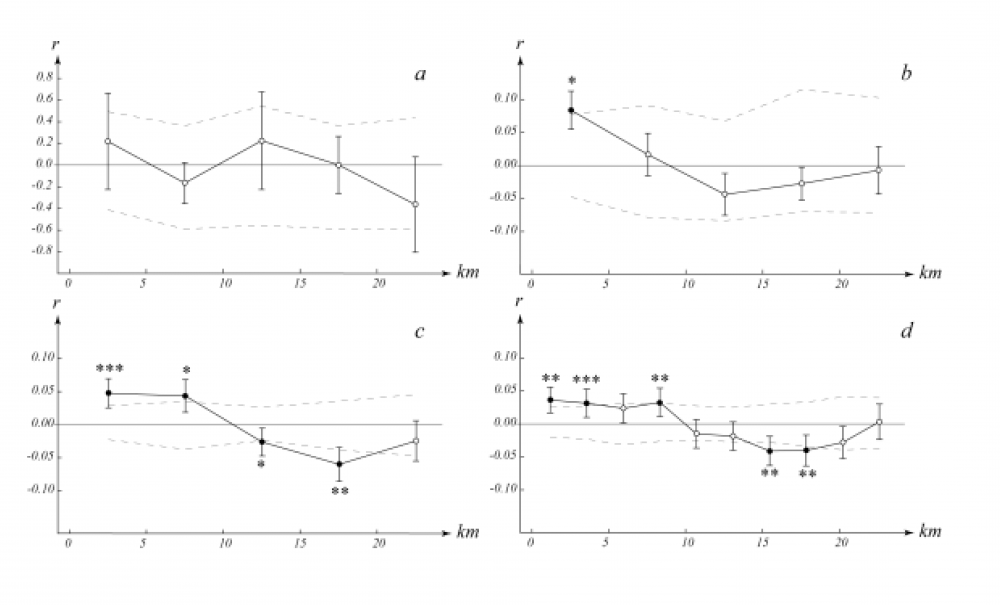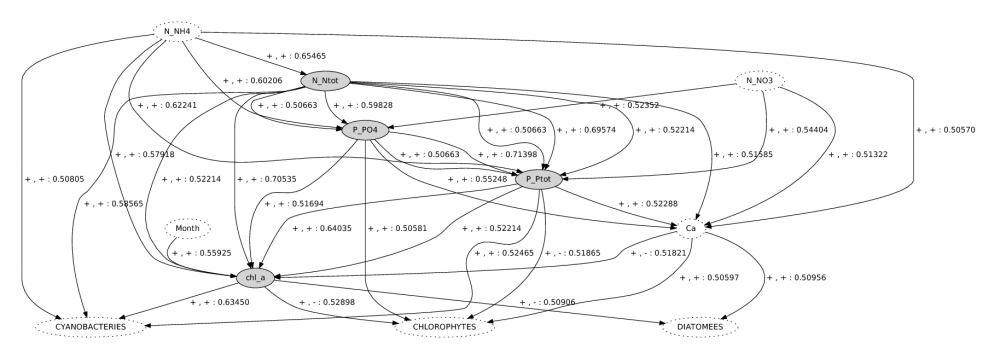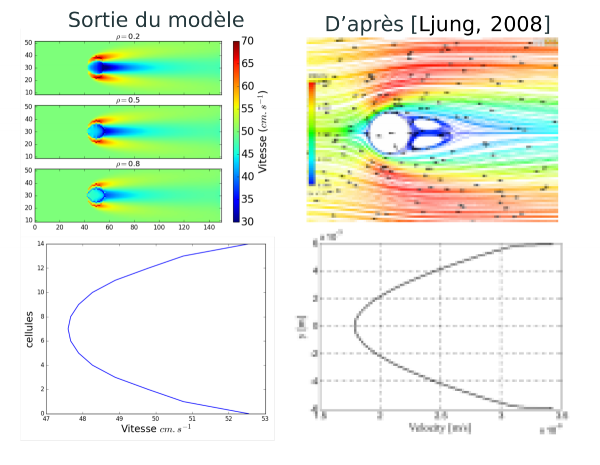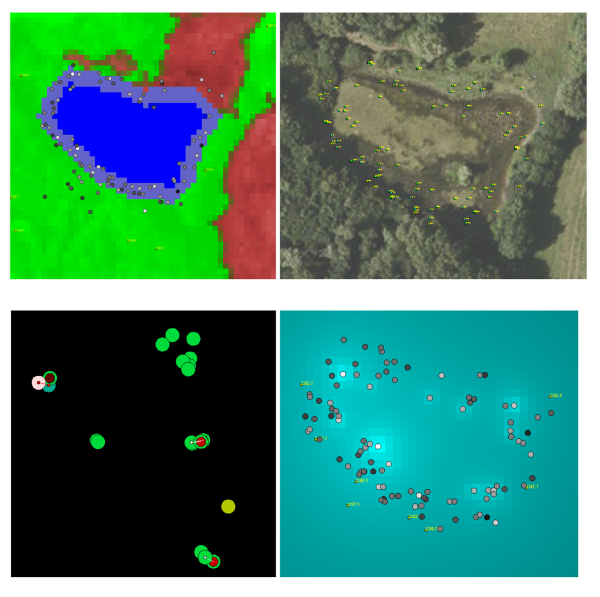Page Tools
- Member of the IMU Labex
Agent-based modeling and evaluation of human-mediated dispersal mechanisms at landscape scale: a study of road network and invasion parameters for Lasius neglectus ant invasive species
- Collaboration with Jérôme Gippet, Charles Rocabert, Adeline Dumet and Bernard Kaufmann

Biological invasions are considered, right after climate and land use changes, to be one of the principal causes of biodiversity erosion. This phenomenon is related to global change, since climate and land use modifications affect environmental conditions, and are partly responsible for the introduction and proliferation of exotic species into new environments. Furthermore, human-mediated dispersal acts as a dispersal vector for many exotic species, both at the introduction and secondary spread stages. On the one hand, introduction stage is a consequence of human-mediated long distance dispersal, due to human activities (and especially commercial exchanges), and is known to happen at large spatial scales (continental or global scales). On the other hand, secondary spread occurs at smaller spatial and time scales (like landscape scale) and can be provided by natural and human-mediated dispersal mechanisms, once the introduction had brought the exotic species into a novel environment, and after it has succeeded in establishing itself (i.e. survive and reproduce). Few works have pointed out the role of these second stages in small-scale invasive species spread. And yet, a lot of invasive species are susceptible to be partly or completely dispersed by local human processes happening at local spatial and time scales (materials transportation, for example). The lack of consideration for this potential important mode of dispersal seems to be the consequence of multiple factors:
- human-mediated dispersal is generally considered as a long distance dispersal process, more responsible for invasive species introduction than for secondary spread,
- it is difficult to qualify and quantify this mode of dispersal because of the multiplicity of potentially involved human activities being its vector,
- for a given organism that can disperse naturally, it is complicated to distinguish between natural and human-mediated dispersal, as they may occur at similar scale.
In this work, we study the spreading pattern of Lasius neglectus, an invasive ant species originated from Anatoly, which invaded Europe in the last decades and which is currently present in the Rhône valley, in France. This species do not perform mating flights, and its spreading is solely ensured by the transport of soil materials (during road works, for example) in which individuals are present. We present a numerical model enabling the estimation of multiple human-mediated dispersal parameters, based on ground-truth sampling and minimizing a priori.
Individual-based sampling in landscape genetics and multi-agent model: study of the impact of fragmentation of anthropogenic origin on geographical dispersal of the alpine newt Ichthyosaura alpestris
- Collaboration with Jérôme Prunier, Jean-Paul Léna, Bernard Kaufmann, Damien Picard, François Pompanon and Pierre Joly

Genetic data are increasingly used in landscape ecology for the indirect assessment of functional connectivity, that is, the permeability of landscape to movements of organisms. Among available tools, matrix correlation analyses (e.g. Mantel tests or mixed models) are commonly used to test for the relationship between pairwise genetic distances and movement costs incurred by dispersing individuals. When organisms are spatially clustered, a population-based sampling scheme (PSS) is usually performed, so that a large number of genotypes can be used to compute pairwise genetic distances on the basis of allelic frequencies. Because of financial constraints, this kind of sampling scheme implies a drastic reduction in the number of sampled aggregates, thereby reducing sampling coverage at the landscape level.
We used matrix correlation analyses on simulated and empirical genetic data sets to investigate the efficiency of an individual-based sampling scheme (ISS) in detecting isolation-by-distance and isolation-by-barrier patterns. Provided that pseudo-replication issues are taken into account (e.g. through restricted permutations in Mantel tests), we showed that the use of interindividual measures of genotypic dissimilarity may efficiently replace interpopulation measures of genetic differentiation: the sampling of only three or four individuals per aggregate may be sufficient to efficiently detect specific genetic patterns in most situations. The ISS proved to be a promising methodological alternative to the more conventional PSS, offering much flexibility in the spatial design of sampling schemes and ensuring an optimal representativeness of landscape heterogeneity in data, with few aggregates left unsampled. Each strategy offering specific advantages, a combined use of both sampling schemes is proposed.
Co-variation pattern mining in ecological data: a process to help build and validate computer models of shallow lakes eutrophication
- Collaboration with Florent Arthaud, Magali Vangkeosay and Adriana Prado

Shallow lakes and ponds represent a high proportion of aquatic ecosystems and, despite being highly managed, have been demonstrated to be hot spots of biodiversity. Aquatic plants are good indicators of their ecological status. Indeed, besides their direct contribution to biodiversity, they provide shelters, support, and food for many organisms, and therefore contribute significantly to increase the complexity of trophic chains and thus to increase biodiversity. However, aquatic plants are potentially vulnerable to human activities and global change through several factors:
- eutrophication, which lead to an increase of competition pressure by phytoplankton and ultimately to the disappearance of vegetation,
- landscape fragmentation and decrease of connectivity between communities, which lead to erosion of biodiversity due to dispersal limitation,
- global change, that leads to water deficiency, increasing dewatering frequency and duration ,
- farming, that leads ultimately to plant disappearance, because fishes uproot and graze plants.
We built both an individual-based model and a PDE-based model by extracting spatiotemporal structures in the dynamic interaction graphs deduced from real-world measures. This model acted as a validating framework for reinforcement learning methods seeking to converge on the most rewarding conservation plan.
Individual-based modeling of underwater plants in laminary environnement
- Collaboration with Sara Puijalon, Anne-Kristel Bittebière and Till Panfiloff

Models that simulate macrophyte propagation usually consider only light availability, water temperature, water velocity, phosphorous, nitrogen, and dissolved inorganic carbon as environmental factors. This study aims to propose a model including sediment effects and ammonium effects. We used a cellular automaton model, well adapted to simulate complex biological systems with dynamic neighborhood relationships. We identified 11 variables to approximate the biological system, and developed a prototype on NetlLogo in order to implement an intuitive user interface as a medium to discuss with expert biologists.The first results explain well the dynamics of real world data. 33 parameters needed to be fitted to initialize the model, 13 of them being identified from field data,the others optimized by using combinatorial optimisation methods. A faster version of the model, developed in Python, was used to compute the required simulations.
Agent-based modeling of arboreal frogs to study males honesty in a context of multi-modal sexual signal
- Collaboration with Yann Voituron, Thierry Lengagne and Armel Thöni

Female Hyla arborea frog mate choice is often thought to be based on signals that honestly reflect male quality as a potential mate. However the existence of differences in energetic costs among males has rarely been considered, while these differences may be decisive in controling the trade-off between calling in order to attract females, and foraging to renew energetic reserves. At the same time, some males gain access to females by exploiting the reproductive investment made by other males (i.e. by cheating).
We implemented in this work a multi-agent simulator dedicated to the exploration of the conjunction of these particular behaviors, as well as the study of the conditions that pilot the choice active exploitation of neighbor's calls among the males.
 Except where otherwise noted, content on this wiki is licensed under the following license: CC Attribution-Noncommercial-Share Alike 3.0 Unported
Except where otherwise noted, content on this wiki is licensed under the following license: CC Attribution-Noncommercial-Share Alike 3.0 Unported